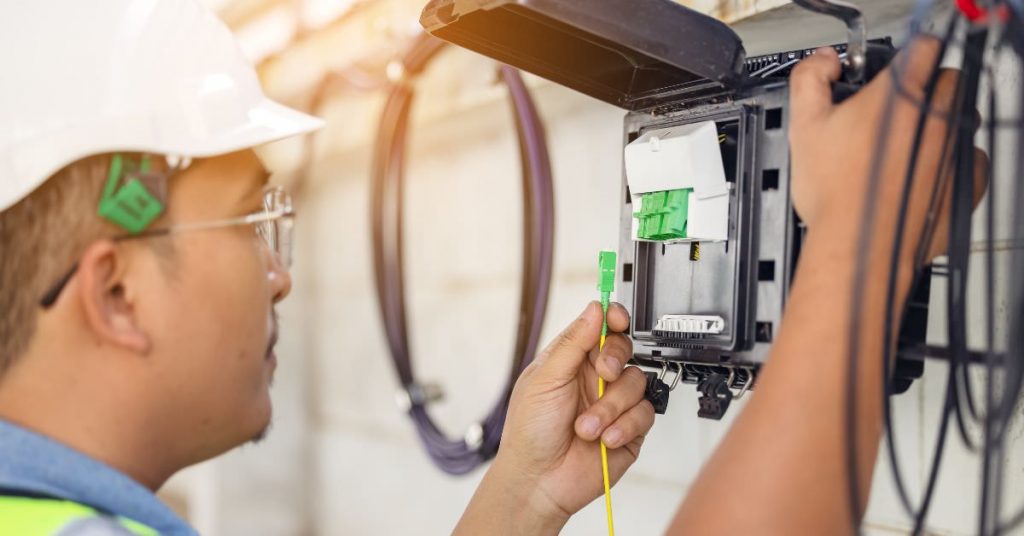
Introduction of Fibre to the Room
Fibre to the Room (FTTR) is revolutionising online experiences. The new fibre technology brings high-speed fibre optic cables directly to any room in your house with high-speed internet connectivity like never before. Gone are the days of buffering and lagging with FTTR offering seamless streaming, gaming, and browsing. Discover the incredible benefits of FTTR and take your online experience to new heights.
Understanding Fibre to the Room (FTTR) technology
Fibre to the Room is an advanced networking solution designed to provide ultra-fast internet connectivity directly to each room. Unlike traditional copper and wireless technologies, FTTR leverages fibre optic cables by extending fibre connections to individual rooms. Subsequently this approach ensures users enjoy optimal performance without compromising bandwidth or speed.
The benefits of FTTR for internet connectivity
The most apparent benefit is reliable connectivity, as fibre optic cables are brought directly to a room. This eliminates issues such as signal degradation and interference.
Other benefits include:
1. Improved speed
Smooth browsing, seamless video streaming, and lag-free online gaming is drastically improved even during peak hours.
2. Reliability and consistency
Fibre optics are less susceptible to electrical signals or environmental interference, resulting in a stable and uninterrupted experience.
3. Symmetrical upload and download speeds
Unlike traditional connections that often provide higher download speeds than upload speeds, FTTR offers symmetrical speeds, allowing for efficient data transmission in both directions. This is especially beneficial for video conferencing, cloud computing, and file sharing, where a balanced upload and download speed is essential.
4. Scalability and future-proofing
Fibre optic technology can handle exponentially increasing data demands therefore making FTTR a scalable solution for the future. As technology evolves and data needs grow, fibre infrastructure can quickly adapt to accommodate higher bandwidth needs without extensive upgrades or rewiring.
Understanding the installation process of Fibre to the Room

Rest assured, the installation process of FTTR is relatively simple.
Summary
First, a fibre optic cable is installed from the main network connection point to the building. This cable connects to a distribution point within the building, such as a server room or utility closet.
Next, fibre optic cables are run from the distribution point to each room within the home. These cables connect to a modem or router in each room, providing direct access to high-speed internet. The installation process must get done by trained technicians ensuring the wires are correctly installed and connected for optimal performance.
Step-by-step installation process
1. Fibre to the Room backbone
FTTR begins with installing a high-capacity fibre optic backbone throughout the home. This backbone is the central distribution point for internet connectivity, allowing data to flow seamlessly from the service provider to each room.
2. Optical Network Terminal (ONT)
An Optical Network Terminal (ONT) is installed per room to connect each room to the fibre backbone. The ONT acts as a bridge between the fibre optic network and the user’s devices, translating the optical signals into electrical signals that can be understood by computers, phones, and other devices.
3. Ethernet or Wi-Fi connectivity
Once the ONT is installed, users can connect devices to the internet using ethernet cables or Wi-Fi. Ethernet links provide a direct and stable connection, ideal for applications that require low latency or high bandwidth. Wi-Fi connectivity offers the flexibility of wireless access, allowing users to connect multiple devices without needing physical cables.
Conclusion of Fibre to the Room
Fibre to the Room represents a game-changing technology transforming connectivity within buildings. By leveraging fibre optic cables, FTTR offers blazing-fast speeds, reliability, symmetrical upload and download, and future-proof scalability. Whether for residential complexes, hotels, or office buildings, this technology ensures users enjoy uninterrupted, high-speed internet access within the confines of their individual rooms.
As the demand for bandwidth-intensive applications grows, FTTR is meeting those demands effortlessly.


